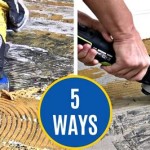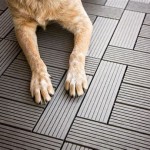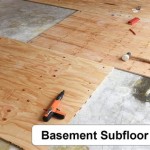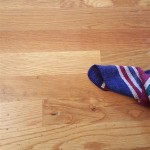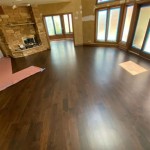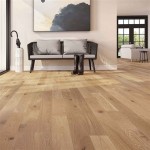Can You Sand and Paint Engineered Wood Floors Together?
Engineered wood floors offer durability and aesthetics, but sometimes, homeowners desire a change in color or style. Painting offers a cost-effective way to revamp these floors, but the sanding process before painting can be a crucial step. The question arises: can you sand and paint engineered wood floors together, or should these processes be approached separately? This article delves into the complexities of sanding and painting engineered wood floors, providing insights into the potential benefits and drawbacks of combining these tasks.
Understanding the Nature of Engineered Wood Floors
Engineered wood floors consist of a plywood core topped with a thin layer of real wood veneer. The veneer is typically 1/16 to 1/8 inches thick, providing the aesthetic appeal and durability of hardwood flooring. However, the construction of engineered flooring differs significantly from solid hardwood, impacting sanding limitations. The plywood core, while sturdy, is not designed for extensive sanding.
The Challenges of Sanding and Painting Together
Sanding and painting engineered wood floors together can present challenges due to the limitations of the veneer layer. Excessive sanding, especially with aggressive grits, can wear through the veneer, exposing the plywood core. This can lead to uneven surfaces, color variations, and a compromised aesthetic appearance. Additionally, the plywood core is generally not as receptive to paint, potentially leading to poor adhesion and premature peeling.
Moreover, the sanding process generates dust, which can contaminate the paint finish. This can result in a rough, uneven paint application and compromise the durability of the paint. Additionally, dust particles trapped under the paint can create imperfections, reducing the overall finish quality.
The Best Approach: Separate Sanding and Painting
For optimal results, it is generally recommended to separate sanding and painting processes when dealing with engineered wood floors. Sanding should be approached with caution, using fine-grit sandpaper (120 grit or finer) and minimal passes. The goal is to lightly smooth out surface imperfections, not remove significant amounts of the veneer.
Once the sanding is completed, allowing ample time for dust removal, the painting process can begin. This approach ensures that the paint adheres well to the veneer, creating a durable and aesthetically pleasing finish. It is crucial to use paint specifically designed for wood floors, providing the necessary protection and longevity.
In conclusion, while sanding and painting engineered wood floors together may seem convenient, it is generally advisable to separate these processes for optimal results. By understanding the nature of engineered wood floors and the challenges they present, homeowners can take a proactive approach to achieving a beautiful and long-lasting painted floor finish.

Can You Paint Engineered Wood Harbor Exports

How To Sand And Refinish Engineered Wood Flooring

Can You Change The Color Of Engineered Wood Floors

Diy Guide How To Professionally Sand Wooden Floors Floorboards

Can You Change The Color Of Engineered Wood Floors

Insane Maple Floor Transformation Full Refinish

How To Paint Wood Floors Without Sanding The Heathered Nest

Can Engineered Wood Flooring Be Refinished Step Into Style The Ultimate Guide To

How To Re Care For A Solid Wood Floor Factory Direct Flooring

Diy Guide How To Professionally Sand Wooden Floors Floorboards
See Also
